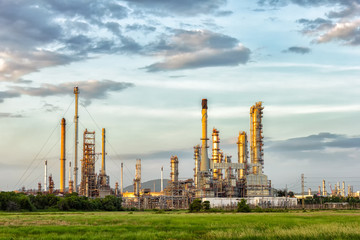 Based on the 2012 BP Statistical Power Survey, Africa had a 2011 refinery capacity of 3317 thousand barrels a day, three.56% of the world total. Refinery throughput was 2219 thousand barrels a day, 2.Ninety three% of the world complete.
Based on the 2012 BP Statistical Power Survey, Africa had a 2011 refinery capacity of 3317 thousand barrels a day, three.56% of the world total. Refinery throughput was 2219 thousand barrels a day, 2.Ninety three% of the world complete.
![Patronage[edit] Patronage[edit]](https://upload.wikimedia.org/wikipedia/commons/f/fb/Annunciation_-_Jan_van_Eyck_-_1434_-_NG_Wash_DC.jpg)
Oil refineries convert crude oil into gasoline products, lubricating oils, bitumen and chemical feedstocks.
Previous to 1954 there were no refineries in Africa. All refined products have been equipped to Africa from European and American refineries. For a few years, Shell and Mobil managed The WARP programme for all the entrepreneurs operating in West Africa. Underneath this programme, each month Shell arranged a ship from Curacao refinery, and Mobil organized a ship from the UK. All marketers would request the portions of each product they wanted, and the ship would make a 鈥渕ilk runalong the coast. There was an analogous association in East Africa.
Within the 50 years between 1954 and 2004 forty eight refineries were in-built Africa. In 1954 the primary African refineries have been inbuilt Algiers (CFP/Complete) and Durban (Socony/Mobil). These had been followed by the constructing of Luanda refinery (Petrofina) in 1958, and refineries in Kenya (Shell/BP), Ghana (ENI/Agip), and Senegal (consortium), in 1963. Within the 1960 refineries had been also in-built Cote d鈥橧voire, Gabon, Tanzania, Nigeria (Port Harcourt I), and Capetown. In the 1970, following nationalisation of the oil trade in lots of nations, a number of state controlled refineries had been built, reminiscent of Arzew in Algeria, Warri in Nigeria, CORAF in Congo, and SoNaRa in Cameroon. A ultimate burst of refinery constructing occurred within the 1980, together with refineries at Warri and Port Harcourt in Nigeria. While there have been a lot of modernisation initiatives since then, the one new refineries constructed up to now 10 years have been Khartoum in 2001, and MIDOR in Egypt in2002.
Even while refineries had been being built, others had been already being closed. In 1966 the Zimbabwe refinery closed on account of sanctions imposed in the course of the UDI interval. Between 1980 and 2003 an additional 10 uneconomic refineries closed permanently.
All of the refineries are mainly of the topping/reforming sort, aside from the four refineries in South Africa, 2 in Egypt, three in Nigeria, 1 in Cote d鈥橧voire, and 1 in Ghana, There are also three Synfuel plants (coal and gas feedstock) in South Africa. The total lively distillation capability for the continent is around 3 million b/d (15 million mt/yr), a mean of 79,000 b/d per refinery.
The biggest refinery in Africa is the Skikda refinery in Algeria (300mbd), the second largest the Ras Lanuf plant in Libya (220mbd). In Sub Saharan Africa the largest are the Port Harcourt refinery I and II in Nigeria (210mbd), and the Shell/BP Sapref refinery in Durban (165mbd).
Excluding some specialty plants (remote locations, bitumen) the smallest working refinery is the 14mbd Solimar refinery in Madagascar, which operates only often. There are a number of small 20mbd refineries including Sogara Gabon, Indeni Zambia, SAR Senegal and CORAF Congo.
The key refining centres in Africa are in South Africa, Nigeria, Egypt and Algeria.
South Africa has four refineries and 3 synfuels plants.
All the South African refineries have undergone major expansions and upgrading since 1990.
Nigeria has three refineries, all owned by the Nigerian National Petroleum Company, NNPC. The Nigerian authorities has announced its intention to promote fifty one% of each of the refineries in 2004.
The Nigerian oil industry has been impacted significantly by operational issues during recent years, and production has been under 50% of capacity.
Egypt has 9 refineries principally concentrated in the northeast (Cairo, Alexandria, Suez). Egyptian Common Petroleum Corp (EGPC) operates all however one of many refineries. The exception is the MIDOR Refinery in Alexandria.
Algeria is one other major refining centre with 4 refineries.
The 6,000 b/d refinery in In Amenas was shutdown in 1986.
Many African refineries have been compelled to close a results of low worldwide refining margins, small local markets, excessive operating price (attributable to small measurement), and poor yields. Following the World Financial institution/IMF insistence on market liberalisation within the early 1980, most of the remaining refineries have faced vital challenges.
Leave A Comment